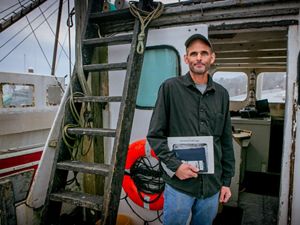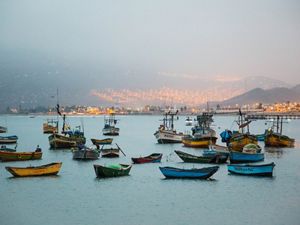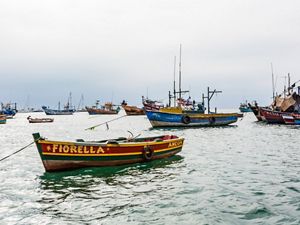A Healthy Ocean Depends on Sustainably Managed Fisheries
TNC brings innovative solutions and science to global fisheries challenges, ensuring healthy marine and freshwater ecosystems and thriving communities
Overview
The health of our ocean and inland waters and the livelihoods of millions of people all depend on well-managed fisheries. Fish and other seafood products provide vital nutrients for more than three billion people around the globe and supply an income for 10 to 12 percent of the world’s population. From small-scale mussel and sea urchin fisheries along the Humboldt Current in South America, to nearshore octopus fisheries in Kenya, to the freshwater fisheries of the U.S. Great Lakes and industrial tuna fisheries in the Western and Central Pacific—these diverse species are essential to healthy ecosystems and resilient communities.
But there is another side of the coin. Unsustainable fishing practices threaten ecosystem resilience by contributing to overfishing and habitat destruction, and fisheries mismanagement leads to an annual economic loss of approximately USD 80 billion globally. Adding to the challenge, climate change amplifies existing stressors to marine ecosystems.
We can still restore the health of our ocean and inland waters and protect sensitive species and habitats, but we must transform the way we interact with our ocean, lakes and rivers— and reforming fisheries management is perhaps the most impactful approach at our disposal.
Global Fisheries: Impact & Opportunity
-
Global wild capture fisheries reached 96.4M metric tons in 2018. No other global sector removes a comparable volume of wild animals from any natural habitat on earth.
-
An estimated USD 80 billion in annual net economic benefits could be generated if we manage our global fisheries better.
-
Fish and seafood are important for nutrition and provide about 3.3 billion people with almost 20 percent of their animal protein.
-
Fish and seafood products are some of the most globally traded items, with a total international export value of USD 164 billion in 2018.
-
Sustainable fisheries management is crucial to reduce the killing of thousands of species, such as turtles and sharks, that are caught or entangled each year.
-
Climate change is altering the productivity of fish species and habitats, creating challenges for ecosystems, communities and the seafood industry.
Quote
We depend on fishing and aquatic ecosystems for survival...Today those ecosystems are depending on us.
Our Approach
At The Nature Conservancy (TNC), we envision sustainable fisheries that result in stable supplies of seafood, thriving coastal communities, biodiversity conservation, and a healthy ocean, rivers and lakes. But there are barriers to achieving this vision—including lack of information about the health of fisheries and ecosystems, and limitations in capacity for implementing solutions. To overcome these barriers, we combine innovative technology and collaboration, helping us fill information gaps and design science, policy, and technology solutions that balance the needs of people and nature to ensure sustainable fisheries.
Our fisheries projects span more than 25 countries, impacting over 1,000 marine and freshwater species.
Highlights of our fisheries work around the world:
- Engaging fishermen, the fishing industry, and seafood supply chains: We work with diverse partners—coastal community members, the fishing industry, technology providers, seafood buyers, universities and local non-profit organizations—to solve fisheries challenges by bringing new models of collaboration. [jump to section]
- Building climate-ready fisheries:
Climate change dramatically alters the distribution and health of important fish species and habitats around the world, exacerbating existing threats such as overfishing. TNC is at the forefront of developing and implementing climate-ready fisheries, leading with science and on-the-water demonstration projects to make adaptive and responsive decisions based on ocean conditions. [jump to section] - Focusing on forgotten fisheries:
Small-scale fisheries and freshwater fisheries often receive little attention and fewer resources for science and management, creating capacity and data limitations that perpetuate overfishing and ecosystem degradation, which in turn places fishing-dependent livelihoods at risk. TNC teams are working to address challenges in data-limited fisheries by working directly with governments and fishing communities. [jump to section] - Putting science and technology to work for fisheries and a healthy ocean:
Applying new technologies and best available science to our global fisheries could revolutionize how we manage our seafood supply and ensure a healthy ocean. Our team combines science with technologies, such as electronic monitoring (EM) and electronic reporting (ER), to collect cost-effective information that can quickly be used by both fishermen and managers to improve fisheries sustainability. [jump to section]
Global Representation of Fisheries Projects:
Marine and Freshwater
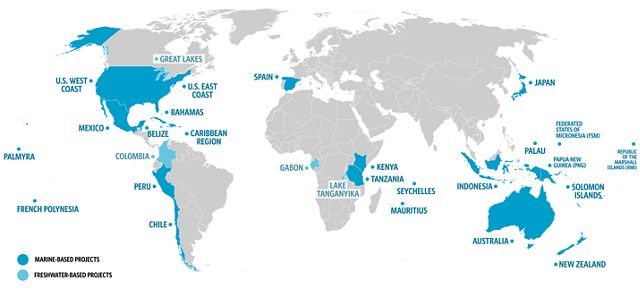
Global Impact
Engaging fishermen, the fishing industry, and seafood supply chains
Our fisheries projects around the world are underpinned by a close collaboration with those that depend on fishing for their livelihoods.
In Kenya, Tanzania, Peru, Chile, Melanesia and Micronesia, we partner with local and indigenous fishing communities to support community-based conservation efforts that have allowed local leaders to sustainably manage fisheries. For example, our work with the Pate Marine Community Conservancy in Lamu County, Kenya, focuses on community-designed solutions such as seasonal closures, no-take zones, and fishing gear restrictions, as well as monitoring and surveillance activities. These activities have enabled women fishers and community leaders to increase their harvest of octopus and negotiate a better price for their catch, while also allowing habitats and species to recover.
In North America, from the Southeast to the mid-Atlantic, and the West Coast and Alaska, we engage with both commercial and recreational fishing sectors to co-develop solutions that have a triple bottom line—sustainable supplies of fish, stability and better prices for fishermen, and ecosystem protection and recovery. For example, in Alaska, we worked with a local fishing organization to launch a fisheries fund that incentivizes ocean conservation and increases fishery policy leadership by supporting the next generation of fishermen in purchasing fishing privileges. In the U.S. West Coast Groundfish fishery, we supported the development of the California Groundfish Collective (CGC)—an organized group of fishermen that create risk-based spatial fishing plans and share information to reduce the catch of vulnerable species, supporting fishery rebuilding efforts.

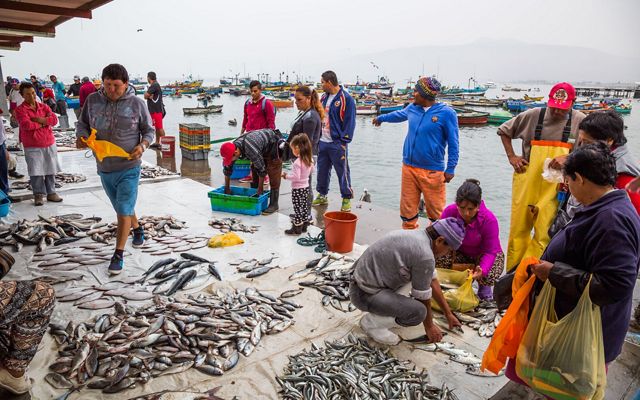
In addition to working directly with fishermen, we collaborate with seafood buyers and other supply chain actors to incentivize sustainable, science-based practices. In Indonesia, where some species of the deep water snapper and grouper fishery are at risk from overfishing, we are spearheading an effort to secure commitments from seafood buyers to only purchase fish that exceed a minimum size for each at-risk species. Similarly, our work with Bahamian fishermen and the Bahamas Marine Exporters Association led to the first-ever Marine Stewardship Council (MSC) certification in the Northern Caribbean region for spiny lobster, a global recognition of sustainability.
Our global reach allows us to leverage solutions between projects, accelerating adoption of best fishing practices, while promoting international collaboration and improving fisheries sustainability worldwide. This is as important in coastal communities in Africa or Latin America as it is in the U.S., where over 80 percent of the seafood consumed is imported—often from countries with bycatch rates of vulnerable species up to 19 times higher. Our work in California to tag swordfish and use findings to deploy low-bycatch gear to reduce impact of fishing to wildlife like sea turtles, dolphins and whales is now being applied to Chile and Peru. This is just one example of how working with fishermen, scientists and governments across borders can ensure a sustainable supply of fish for consumers and healthy habitats and species at scale.

Building climate-ready fisheries
Fishing communities are experiencing the effects of climate change firsthand through shifts in temperature, acidification, deoxygenation and changes in fish stock distribution.
In New England, where the ocean is changing faster than 99 percent of the world’s ocean, warming temperatures are causing commercially important fish species to shift their ranges, presenting challenges such as difficulty in reaching new fishing grounds. On the West Coast, meanwhile, there have been record numbers of whale entanglements in crab fishing gear as whales change their historic distribution to follow their prey, influenced by changing ocean conditions. Our team is building climate-ready solutions by working with fishermen, agencies and other stakeholders to improve whale location predictions and their overlap with fishing season timing and using this information to track risks in near real time.
Quote: Chris McGuire, Marine Program Director,
We are well positioned to work collaboratively to solve problems that are facing both fishermen and our ocean.
We also work closely with government agencies responsible for managing fisheries to implement adaptive actions in response to climate change impacts. In Mexico, we actively lead a fisheries capacity-building program that has supported fishery scientists and managers in developing climate-ready fisheries management plans. And in collaboration with the U.S. Pacific Fishery Management Council, our team has been leading an initiative that utilizes scenario planning to better understand plausible future scenarios of ecological and socio-economic change.
Focusing on forgotten fisheries
With small-scale fisheries employing more than 90 percent of the 35 million people recorded globally as fishermen and women, addressing the challenges in small-scale and data-limited fisheries is essential for providing local communities with a sustainable source of income and food.
Quote: Carmen Revenga

The FishPath process takes a holistic view and builds a tailored approach for each fishery.
A key element of TNC’s work is our FishPath program, an approach to setting fisheries on a path to sustainability by engaging with local stakeholders to develop tailored solutions. The FishPath process combines an online decision-support tool with trainings to empower local stakeholders to design and implement science-based fisheries management.
To date, FishPath has been applied across a range of geographies—from coastal finfish in Peru and Chile, to reef fish in Hawaii, to queen conch in The Bahamas and spiny lobster in Kenya. Our work has already resulted in several successful projects, and we are continuing to expand to additional coastal fisheries in need of improved, sustainable management through the growing FishPath Network.
For example, in Peru, we worked with government agencies and fishing communities to support creation of a national-level annual closure for an important but declining coastal finfish fishery called chita, and we collaborated with community members in Ancón to strengthen capacity for implementing science-based data collection protocols. In northern and central Chile, where coastal finfish are largely unregulated across the entire kelp forest ecosystem, we are leading a FishPath process to develop regulations for a suite of 15 species that support both sensitive coastal habitat conservation and fishery sustainability.
In Africa, we are supporting coastal villages in Kenya and in Lake Tanganyika (Tanzania) to enact and enforce their own sustainable fishing regulations, such as outlawing destructive fishing nets, and protecting fish breeding and nursery zones. In Lake Tanganyika, we are combining this fisheries work with microfinance opportunities in support of income diversification, with education programs and reproductive health initiatives for local women. On the other side of the globe in the U.S. Great Lakes, we are working to identify, protect and restore enough spawning habitat so that populations of whitefish, cisco and lake trout are rebuilt for the benefit of healthy Great Lakes, their fisheries, and their communities.
Putting science and technology to work for fisheries and a healthy ocean
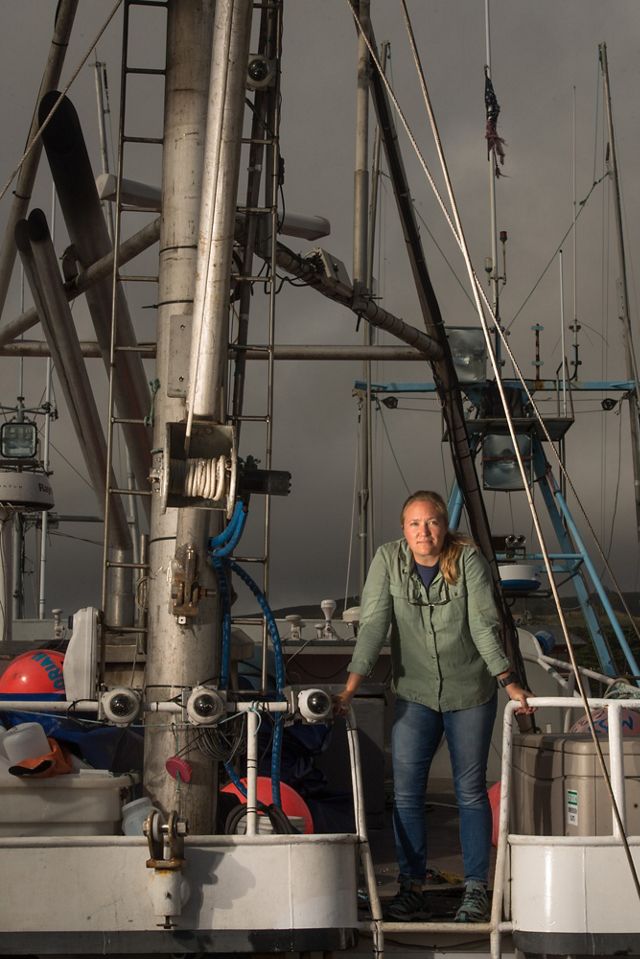
For many fisheries, we don’t always have accurate information about what is being caught, where it is caught, and how it is caught. That’s why TNC is working to fill critical data gaps and improve fishery transparency through electronic monitoring, electronic reporting, and other technological advances that capture key fishing data.
For example, we are advancing electronic monitoring solutions that use cameras and sensors onboard fishing vessels to automatically capture key fishing activity information. Electronic monitoring can provide detailed, verifiable data on scientific information (e.g., size and number of catch), compliance (e.g., sharks finned, pollution thrown overboard), and labor conditions (e.g., unsafe working conditions). This technology can also give consumers confidence when purchasing seafood labeled as “sustainably harvested” that the product is traceable from bait to plate.
TNC is leading global implementation of electronic monitoring in 16 countries across an area of more than 30 million square kilometers, within Chile, New Zealand, Parties of the Nauru Agreement, Peru, Seychelles and the United States. In the rich waters of the Western and Central Pacific Ocean, where 60 percent of the world’s tuna is harvested, we are demonstrating that this technology can guide policy, spur innovation to reduce costs, and catalyze market growth that will optimize ocean health.
Quote: Mark Zimring
It’s often hard to see what’s happening in large-scale, offshore fisheries, but new technologies help us better understand and better manage them—good for both nature and people.
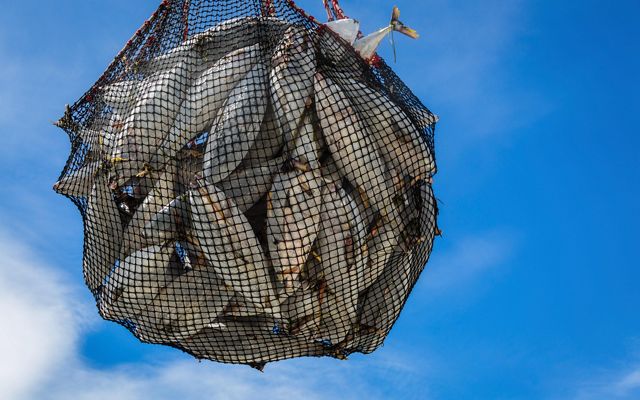
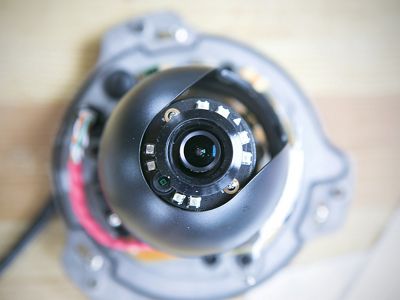
In addition to taking electronic monitoring to scale, we also apply new science and technologies in other critical areas of fisheries management. Many fisheries rely on paper-based methods, creating lags between data collection and management actions. Harnessing recent advances in machine learning and fisheries assessment science, we developed Poseidon–a software tool that allows users to photograph captured species and generate valuable length measurements.
We share and apply our science and technologies across different geographies. Exchanging science between The Bahamas and Belize, our teams brought lessons about Queen Conch biology and maturity from Belize’s Queen Conch fishery to Bahamian Conch fishermen. Similarly, we are also facilitating knowledge exchanges between fishermen from Puerto Rico and Chile to learn how digital reporting of fish catches supports more sustainable fisheries. Overall, our international reach allows for fisheries innovations to scale and expand, supporting a healthy global ocean.
Want to learn more or connect with us?
Contact fishpath@tnc.org.
Global Insights
Check out our latest thinking and real-world solutions to some of the most complex challenges facing people and the planet today.

